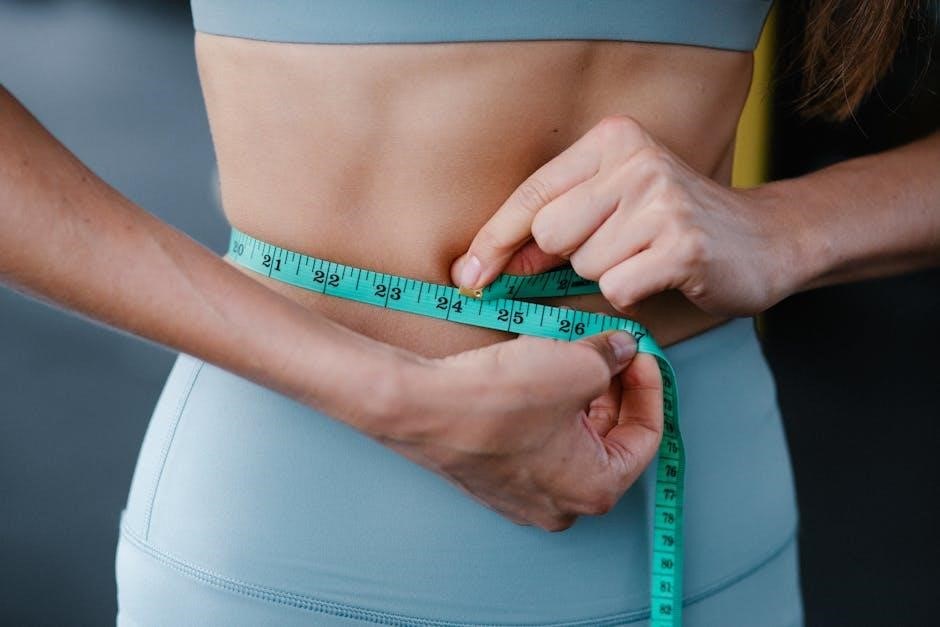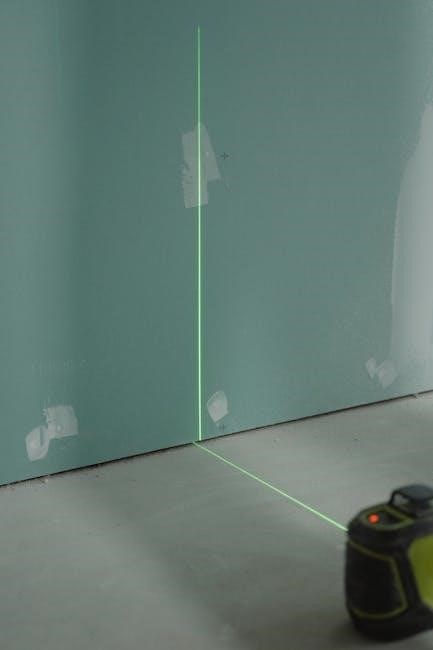
wheelchair measuring guide
A proper wheelchair fit is crucial for comfort, safety, and independence. This guide provides step-by-step instructions on measuring seat dimensions, posture alignment, and weight capacity to ensure the best fit and optimal mobility.

Seat Measurements
Accurate seat measurements ensure a comfortable and functional wheelchair fit. Measure seat width, depth, and height while seated on a firm surface. Subtract 4 cm for legrests to get the ideal fit. Proper measurements enhance posture and mobility.
Seat Width
Seat width is a critical measurement for ensuring a comfortable and functional wheelchair fit. To measure seat width accurately, sit on a firm, flat surface and position yourself in your ideal posture. Measure the widest part of your hips or buttocks while seated. This measurement ensures the seat is neither too tight nor too loose, providing adequate support and preventing pressure points. It’s important to consider the natural spread of the hips and avoid compressing soft tissue. Add about 2.5 cm to the measurement for optimal comfort and clearance. Use a metal measuring tape or calipers for precise results. Proper seat width alignment is essential for maintaining good posture and preventing discomfort during extended use. Always take measurements with the user wearing their usual clothing to ensure accuracy. This step is fundamental for a well-fitted wheelchair that supports independence and mobility.
Seat Depth
Seat depth is measured from the back of the buttocks to the back of the knee, ensuring proper support and comfort. Sit on a flat surface with feet flat on the ground. Measure the distance from the rear-most point of the buttocks or lower back to the hollow at the back of the knee. Subtract approximately 4 cm to account for the legrest angle and user physique. This ensures the seat depth is neither too long nor too short, promoting good posture and preventing pressure points. Proper seat depth allows for optimal blood circulation and avoids discomfort. It’s crucial for maintaining the natural alignment of the legs and hips. Use firm measuring tools like a metal tape measure for accuracy. This measurement is vital for ensuring the wheelchair supports the user’s body correctly, enhancing mobility and comfort. Always take measurements while the user is in their ideal sitting posture for the best results.
Seat Height
Seat height is measured from the floor to the top of the seat cushion while the user is sitting with their feet flat on the ground. This measurement ensures the wheelchair is at the correct height for comfort, accessibility, and maneuverability. Proper seat height allows the user to place their feet flat on the floor or on a footrest, promoting good posture and reducing the risk of pressure sores. It also enables easy transfer to and from the wheelchair. To measure seat height accurately, ensure the user is sitting on a firm, flat surface with their knees at a 90-degree angle. The measurement should be taken from the floor to the top of the seat cushion at the rear. This ensures the wheelchair is tailored to the user’s body, providing optimal support and ease of use. Proper seat height is essential for both comfort and functionality, making it a critical measurement in the fitting process.
Seat-to-Floor Height
Seat-to-floor height measures the distance from the floor to the top of the seat cushion while the user is seated. This measurement is critical for ensuring proper fit and functionality, as it directly impacts mobility and accessibility. A correct seat-to-floor height allows the user to maintain good posture, with feet flat on the floor or a footrest, preventing strain and discomfort. It also ensures the wheelchair is low enough for easy transfers and high enough for adequate clearance. To measure accurately, the user should sit with knees at a 90-degree angle and feet flat. The height is recorded from the floor to the top of the seat cushion at the rear. Proper seat-to-floor height ensures the wheelchair is tailored to the user’s needs, promoting comfort, ease of use, and independence. This measurement is vital for optimizing both the user’s experience and the wheelchair’s performance.

Backrest Measurements
Proper backrest measurements ensure a comfortable and supportive fit, preventing strain and promoting good posture. The height and angle should allow the user to sit upright and maneuver easily. Adjustments are based on individual needs and preferences for optimal support and mobility.
Backrest Height
Measuring the backrest height is crucial for ensuring proper spinal alignment and comfort. The backrest should typically reach the mid-to-upper back region to provide adequate support without restricting shoulder movement. To measure accurately, start from the seat surface and extend the tape up to the top of the backrest. The recommended height usually ranges between 24 to 32 inches, depending on the user’s height and specific needs. Adjustable backrests allow customization to fit individual preferences. Proper alignment ensures the user can sit upright without strain, promoting good posture and preventing discomfort. Always consider the user’s posture and any additional features like lumbar support when determining the optimal backrest height for maximum comfort and support.
Backrest Angle
The backrest angle is a critical measurement for ensuring comfort and proper posture in a wheelchair. It refers to the tilt of the backrest relative to the seat. A common range is between 90 degrees (upright) and 120 degrees (reclined). The ideal angle depends on the user’s needs, such as lumbar support or pressure relief. For active users, a more upright angle (around 90-100 degrees) is often preferred, while a reclined angle (100-120 degrees) may be better for users requiring additional support. Measuring the angle involves using a protractor or a digital angle measurement tool. Proper alignment ensures optimal weight distribution and reduces the risk of discomfort or posture-related issues. Always consider the user’s ability to maneuver and their specific health requirements when determining the backrest angle for maximum comfort and support.

Armrest Measurements
Armrest measurements are crucial for ensuring proper support and accessibility. They affect comfort, maneuverability, and the user’s ability to interact with surfaces like tables or desks. Proper alignment and adjustment are key.

Armrest Height
Armrest height is a critical measurement for wheelchair users, as it directly impacts comfort and accessibility. It is measured from the floor to the top of the armrest when the wheelchair is on a flat surface. Proper height ensures the user can easily transfer, reach surfaces like tables or desks, and maintain good posture. The armrests should ideally allow the user’s elbows to bend at a 90-degree angle, with shoulders relaxed and wrists straight. Adjustable armrests are beneficial, as they can accommodate different activities or environments. Incorrect height may lead to discomfort, strain, or difficulty in maneuvering the chair. Measuring armrest height accurately ensures the wheelchair is tailored to the user’s needs, promoting independence and reducing the risk of long-term health issues like shoulder or neck pain.
Armrest Length
Armrest length is an essential measurement for ensuring proper support and comfort. It is measured from the front edge of the armrest to the back edge, determining how far the armrest extends to support the user’s forearms. Proper armrest length allows the user to sit comfortably without feeling cramped or stretched. It should accommodate the user’s forearm length, enabling them to rest their arms naturally. Incorrect armrest length can lead to discomfort, poor posture, or difficulty maneuvering the wheelchair. Adjustable armrests are ideal, as they can be tailored to the user’s specific needs. Measuring armrest length accurately ensures the wheelchair provides optimal support, reducing the risk of shoulder or neck strain. This measurement is crucial for maintaining mobility, independence, and overall comfort during daily use.
Footrest Measurements
Footrest measurements ensure proper support and posture. They include footrest height and legrest length, crucial for comfort and mobility. Proper measurements prevent discomfort and promote efficient movement.
Footrest Height

Footrest height is a critical measurement for ensuring proper posture and comfort. It refers to the distance from the floor to the footrest platform. The ideal height should allow the user’s feet to rest flat, with knees at or slightly below hip level. This prevents excessive pressure on the legs and promotes healthy circulation. When measuring, consider the user’s shoe thickness and any cushions or supports that may affect the final height. An adjustable footrest is beneficial for accommodating different positions or environments. Proper footrest height also helps maintain balance and reduces the risk of pressure sores. Always ensure the measurement aligns with the user’s specific needs and body proportions for optimal comfort and functionality.
Legrest Length
Legrest length is essential for ensuring proper support and comfort. It measures the distance from the back of the knee to the heel when the leg is extended. Proper legrest length prevents pressure sores and discomfort, ensuring the legs are adequately supported. To measure correctly, the user should sit straight with feet flat on the floor or footrest. Adjustability is key, as it allows customization to individual needs, such as longer legs or specific support requirements. Proper fit is crucial for comfort and strain prevention. While legrest length impacts posture, focus remains on direct leg comfort and support, avoiding overlap with other sections. Ensuring the correct length enhances overall wheelchair functionality and user well-being, making it a vital measurement in the wheelchair fitting process. Always consider adjustability for optimal support and comfort.
Overall Dimensions
Overall dimensions ensure the wheelchair fits through doorways and spaces; Measure chair width and depth for proper clearance and ease of movement in various environments.
Chair Width
Chair width is a critical measurement for ensuring proper maneuverability and comfort. It is typically measured across the widest part of the wheelchair, including the armrests and wheels if they extend beyond the frame. This measurement helps determine whether the chair will fit through doorways, hallways, and other tight spaces. For accuracy, measure from the outer edge of one armrest to the outer edge of the other, ensuring any additional components like wheels or attachments are included. Proper chair width ensures the user can move freely without obstruction, making it essential for both indoor and outdoor use. Additionally, this measurement plays a role in transportation, as it affects how the chair fits in vehicles. Always consider the user’s body size and any accessories that might add to the overall width for optimal fitting and functionality.
Chair Depth
Chair depth is a vital measurement for ensuring comfort and proper posture in a wheelchair. It is measured from the back of the seat to the front edge of the chair, including any footrest or pedal. Accurate measurement ensures the user’s legs are neither too cramped nor too extended, which can lead to discomfort or poor posture. To measure chair depth, start from the rear of the seat cushion and extend the tape measure to the farthest point of the footrest or pedal. Consider the user’s leg length and preferred sitting position, as these factors influence the ideal depth. Proper chair depth promotes better posture, reduces the risk of pressure sores, and ensures the user can maneuver comfortably. It also affects how the chair interacts with other mobility aids or accessories. Always double-check this measurement to ensure optimal fit and functionality.

Posture and Alignment
Posture and alignment are crucial for wheelchair users to ensure comfort and prevent health issues. Proper alignment supports the spine and distributes weight evenly, preventing discomfort and maintaining mobility effectively over time.
Importance of Posture
Proper posture is essential for wheelchair users to ensure comfort, health, and functionality. It prevents slouching, maintains spinal alignment, and reduces pressure points that can lead to discomfort or long-term issues like pressure sores or back pain.
Good posture also improves respiratory and digestive functions by allowing the diaphragm and internal organs to function more effectively. Additionally, it enhances mobility and energy efficiency, as the body is positioned to optimize wheelchair propulsion and movement.
Correct posture supports overall well-being by reducing muscle strain and promoting confidence. It is a critical factor in selecting and adjusting a wheelchair to meet individual needs, ensuring long-term comfort and independence.
Measuring Posture
Measuring posture in a wheelchair involves assessing the user’s alignment to ensure optimal comfort and support. Start by ensuring the user is seated with their back against the backrest and feet flat on the footrest. The spine should be in a neutral position, with shoulders relaxed and ears aligned with shoulders.
Use a goniometer or inclinometer to measure the angle of the backrest, typically between 90° and 110° for upright postures. The seat-to-floor height should allow knees to be at or below hip level. Measure the angle of the footrest to ensure proper leg alignment, avoiding excessive pressure on the thighs.
Record these measurements to adjust the wheelchair accurately. Proper posture measurements ensure the chair is tailored to the user’s needs, promoting comfort and preventing long-term health issues. Consistent measurements are key to maintaining optimal alignment and support.

Weight Capacity
Weight capacity is a critical factor, determined by the wheelchair’s construction and materials. It ensures safety and durability, accommodating the user’s weight plus any additional accessories or equipment.
Measuring Weight
Accurately measuring a user’s weight is essential to determine the appropriate wheelchair weight capacity. Use a reliable scale, ensuring the individual wears typical clothing and no shoes. Record the weight in kilograms or pounds, as this data is crucial for selecting a chair that can safely support the user. If the person cannot stand, a wheelchair scale or a bed scale may be necessary. Always refer to the manufacturer’s guidelines for specific measurement instructions. Precise weight measurement helps prevent overloading the chair, which can compromise safety and durability. It also ensures proper fit and functionality, enhancing overall mobility and comfort. Regular weight checks are recommended, especially for users whose weight may fluctuate, to maintain optimal support and safety. This step is vital for long-term satisfaction and effectiveness of the wheelchair.
Weight Distribution

Proper weight distribution is critical for comfort, stability, and preventing pressure sores. It involves ensuring the user’s weight is evenly spread across the wheelchair’s seat and backrest. Assess the user’s posture to identify any imbalance. If the weight is uneven, adjustments such as tilting the chair or using cushions can help redistribute pressure. The axle position of the wheels and the seat angle also play a role in weight distribution. A well-balanced setup reduces the risk of tipping and enhances maneuverability. Regularly monitoring weight distribution ensures long-term comfort and prevents potential health issues. Proper alignment and support are key to maintaining optimal weight distribution, which is essential for both active and passive users. This step ensures the wheelchair is tailored to the user’s specific needs, promoting independence and overall well-being.
Additional Tips
Always consult a professional for precise measurements. Consider the user’s lifestyle and environment when selecting a wheelchair. Regularly check and adjust the chair to ensure optimal fit and comfort over time.
Measuring Tools
Accurate measurements require the right tools. A flexible tape measure is essential for capturing seat depth, width, and backrest height. A level tool ensures proper alignment of the wheelchair. Calipers can measure narrower spaces, while a protractor helps determine angles for posture. Digital measuring tools, like laser pointers, provide precise distance calculations. Always use a sturdy, non-elastic tape measure for reliability. For complex measurements, consider a goniometer to assess joint angles. Ensure all tools are calibrated and in good condition to avoid errors. Refer to the manufacturer’s guidelines for specific tools recommended for your wheelchair model. Proper tools guarantee precise fit and optimal comfort, making the measuring process efficient and effective.

Measuring Techniques
Proper measuring techniques ensure accuracy and comfort. Start by positioning the user correctly, with feet flat on the floor or footrests. Use a flexible tape measure to wrap around the widest part of the hips for seat width. Align the tape measure parallel to the floor to avoid skewed measurements. For depth, measure from the back of the hips to the back of the knees. When measuring height, ensure the tape measure is level and straight. Record multiple measurements to ensure consistency. Always consider the user’s posture and any specific needs; If unsure, consult a professional fitter. Taking the time to measure correctly ensures a proper fit, enhancing mobility and comfort. Accuracy is key to avoiding discomfort or poor wheelchair performance.
Common Mistakes to Avoid
When measuring for a wheelchair, it’s crucial to avoid common mistakes that can affect the chair’s fit and functionality. One major error is not accounting for the user’s posture or specific needs, leading to discomfort or poor support. Another mistake is using improper tools, such as a rigid tape measure that doesn’t conform to the body’s shape. Measuring only once can result in inaccuracies, so taking multiple measurements is essential. Forgetting to consider accessories or clothing, like cushions or bulky attire, can also impact the fit. Incorrect positioning, such as not placing feet flat on the floor or footrests, can skew measurements. Rushing through the process and not double-checking can lead to oversights. Additionally, measuring the chair itself instead of the user’s body is a significant mistake. Avoiding these errors ensures the wheelchair is comfortable, safe, and tailored to the user’s requirements.